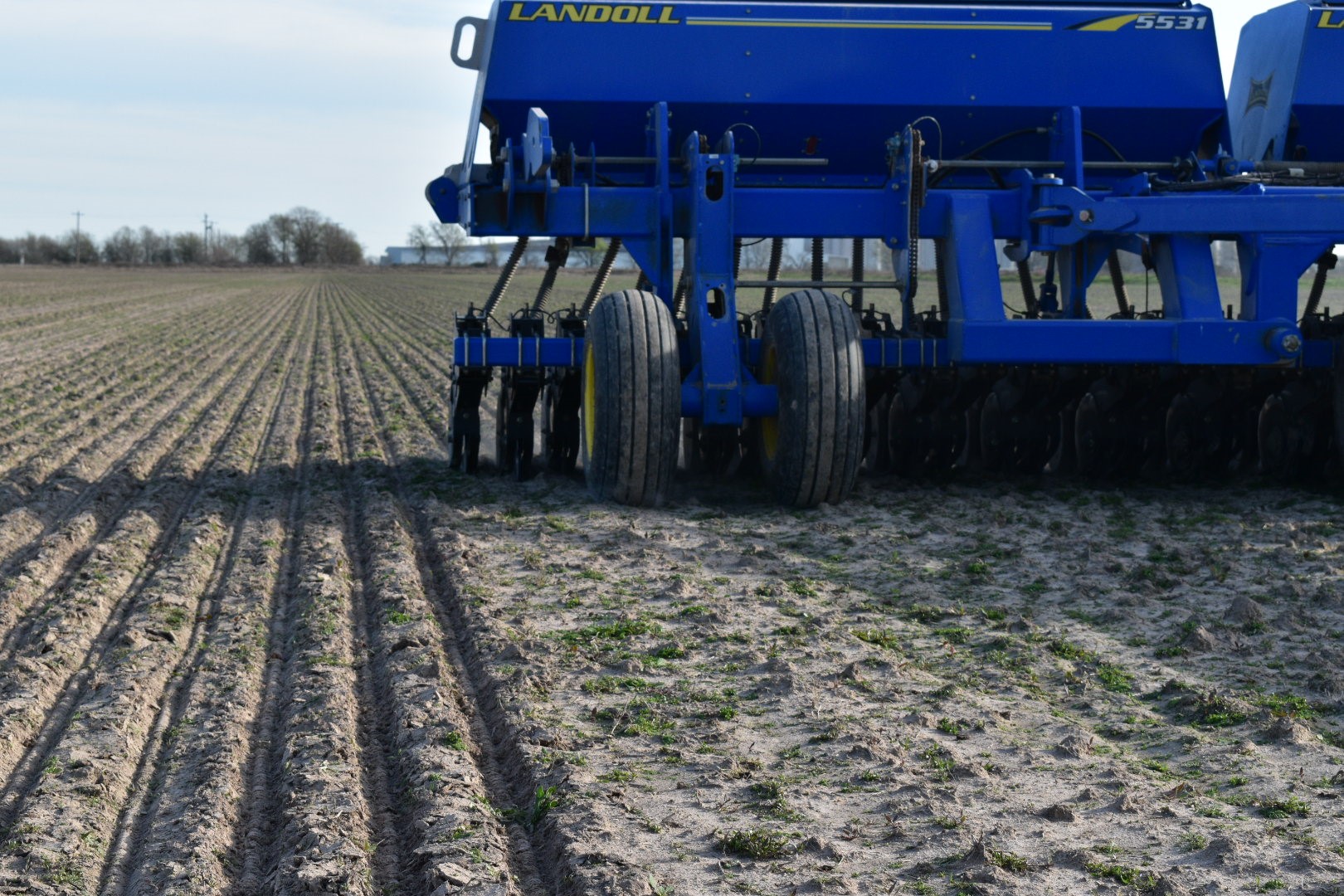 Drill-seeding rice into a stale seedbed (T. Gertson photo)
Drill-seeding rice into a stale seedbed (T. Gertson photo)
Apr 02, 2020
MOUNTAIN VIEW, TX -- Rice planting is progressing rapidly in the Texas rice production belt. Some producers even finished up very early this year.
L.G. Raun, who farms near El Campo, planted his entire crop (CL151) in a three-day span of February 29-March 2. “Other than a few herbicide application skips, the crop looks very good,” said Raun. On Monday, he estimated that 80 percent of the rice crop in Wharton County had been planted, and at 36,000 acres, will have the most rice acres in Texas.
The Texas A&M AgriLIFE Research Center at Beaumont publishes an estimate of planted acres each Friday during the planting season. These estimates are based upon inputs of many individuals throughout the rice production areas. As of March 27, this report estimated that 56 percent of the state’s rice area had been planted, and that the Texas rice planted acreage will be around 163,000 acres, which is roughly a 10,000 acre increase from 2019.
“I finished planting on Tuesday,” said Timothy Gertson, who farms near Lissie. “I would say 90 percent of the non-organic rice in my area has been planted. Conditions are good for completing planting and crop growth and development right now. This was the best start I’ve had in 12 years of farming. Planting and growing conditions have been ideal, and stands are excellent across the board.”
Dick Ottis, with Rice Belt Warehouse in El Campo, estimated that west of Houston 75 to 85 percent of the crop is in the ground and 65 percent is emerged. “Everyone says the crop looks good but needs a rain. There have been no major issues so far.”
Scott Savage farms rice near Bay City in Matagorda County. He grows both organic and conventional rice, and finished seeding on Tuesday with his last organic fields. “We had significant blackbird pressure in the earlier planted rice, but this seems to have abated. Planting got off to a later start east of Houston because of wetter field conditions.”
According to Dorsey Jones, who is with Helena east of Houston and works Jefferson, Chambers and Liberty counties, as of Monday his area was 40 percent planted with about 30 percent emerged, but that planting was progressing rapidly. “Initially, planting was slowed because most fields needed significant field preparation. Very little cultivation occurred in the fall of 2019 due to the rain, so many fields currently being planted haven’t been touched since harvest in 2018.” Dorsey also said that emergence and early growth have been excellent, but many fields need flushing to facilitate germination and herbicide activation. “There have been problems with blackbirds in some areas, but AV-1011, a bird repellent seed treatment, has worked excellently where it was used.”
Early rice planting is important in Texas as a significant amount of Texas rice acreage produces both a main and ratoon (second) crop. A ratoon crop is produced by fertilizing and reflooding a field after the main crop has been harvested. New tillers will emerge from the plants, and in 75-90 days, a second harvestable crop will be mature and ready for harvest. Research has shown that rice should be planted no later than April 15 in Texas to optimize both main and ratoon crop yields. Since the entire Texas coastal rice growing region is susceptible to damage from hurricanes, the earlier rice is planted the sooner it will be harvested, which somewhat minimizes exposure to hurricane damage.
All those contacted reported that the Coronavirus situation has not caused any major disruptions in their farming operations.